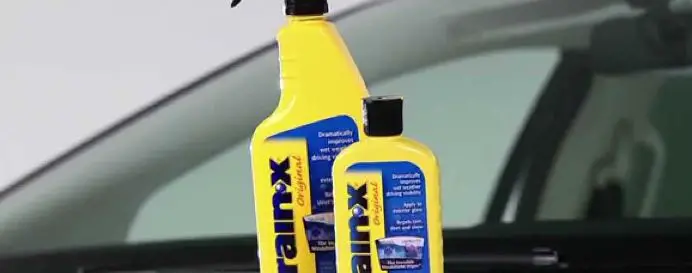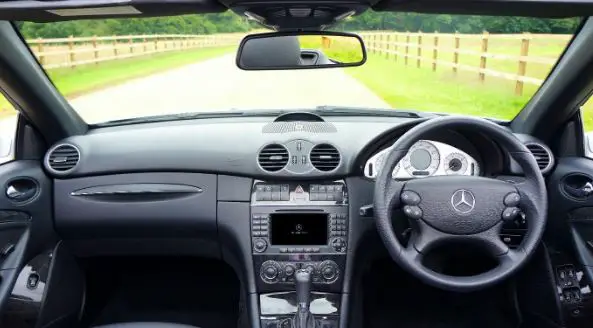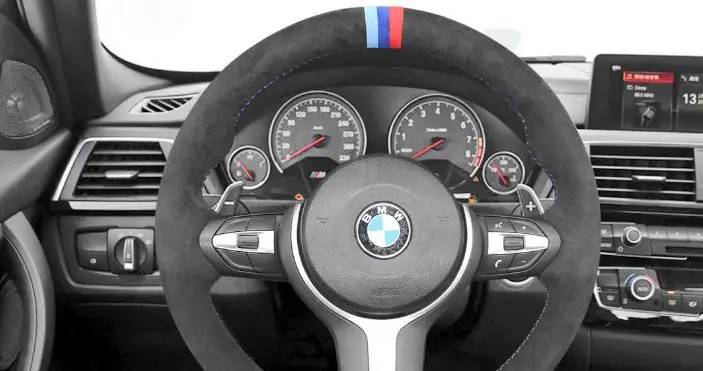As we navigate the roads of life, we’re often seeking ways to enhance our driving experience, particularly when it comes to driving in adverse weather conditions. One product that has gained considerable attention in this regard is Rain-X, a treatment designed to repel rain from vehicle windshields. But the question on many drivers’ minds is – could this seemingly helpful product actually be detrimental to your windshield?
In this blog post, we will delve deep into the world of Rain-X. We’ll explore what it is, how it works, and the benefits it offers to drivers around the world. We will also confront some of the most common problems associated with Rain-X, addressing queries and concerns raised by its users. Lastly, for those who may feel the need to go back to a Rain-X-free windshield, we will guide you through the process of safe and effective removal of the product.
Lets take a look!
What Is Rain-X?
Rain-X is a well-known product that’s been a part of the automotive industry for several decades. Developed with the primary goal of enhancing visibility during inclement weather, Rain-X offers a suite of products intended for various vehicle care needs, the most famous of which is their windshield water repellent.
Originally conceived in the 1970s, Rain-X started off with a singular focus – to provide drivers with an unobstructed view of the road, particularly during wet conditions. The product’s success quickly led to the expansion of the brand’s offerings, and today, Rain-X boasts an array of products, including windshield repair kits, car washes, wiper blades, and of course, their iconic glass treatment products.
How Does Rain-X Work?
Understanding the magic of Rain-X doesn’t require a PhD in chemistry. Simply put, Rain-X creates an invisible layer over your windshield that makes water droplets less likely to stick around. Let’s break it down.
The Science Behind Rain-X
Rain-X is based on a simple yet effective concept known as “hydrophobicity,” or fear of water. Imagine you’re at a party and there’s someone you’re trying to avoid – you’d likely move away or slide off, right? In essence, that’s what the Rain-X layer makes water droplets do on your windshield.
When Rain-X is applied to a windshield, it creates an invisible barrier that reduces the windshield’s attraction to water. This makes the windshield hydrophobic.
The Effect of Rain-X on Visibility
This hydrophobic effect causes water to form into round droplets that quickly roll off the windshield instead of spreading out and blocking your view. The outcome? When it rains, water beads up and rolls away, leaving a clearer view of the road. This effect becomes even more pronounced as your driving speed increases, with the wind helping to whisk the water droplets away.
In other words, Rain-X changes the way water behaves on your windshield, leading to a clearer, safer driving experience in rainy conditions. And all of this happens without you having to do anything but drive as you normally would!
Is Rain-X Good? Does It Work?
The short answer is, absolutely. Rain-X does work as claimed, improving driving visibility and safety in wet conditions by repelling rainwater off your windshield. The unique, hydrophobic formula of Rain-X offers several benefits to drivers, as detailed below:
A. Enhanced Driving Visibility in Rain
First and foremost, Rain-X can dramatically enhance visibility during rainfall. By causing water to bead and roll off the windshield, drivers are afforded a clearer, uninterrupted view of the road. This is especially noticeable at highway speeds, where the wind effectively clears the beads of water off the glass, often reducing the need for constant windshield wiper use.
B. Protection of Windshield Against Minor Scratches
Another advantage of Rain-X is the protective layer it forms on the windshield. This layer doesn’t just repel water; it also adds a certain degree of protection against minor scratches. It’s not a substitute for a strong, well-maintained windshield, but it can help prolong the lifespan of your windshield by offering some protection against day-to-day wear and tear.
How Long Does Rain-X Last?
A single application of Rain-X can last for about three months, or even longer, under ideal conditions. This is based on regular usage and assumes the proper application of the product as directed by the manufacturer. However, this duration can be influenced by several factors:
- Frequency of Windshield Wiper Use: Regular use of windshield wipers can cause the Rain-X treatment to wear off faster. This is due to the constant friction applied to the windshield, which gradually diminishes the Rain-X layer.
- Weather Conditions: Harsh weather conditions, such as heavy rain, snow, or extreme temperatures, can also shorten the lifespan of a Rain-X application.
- Car Washes: Frequent car washing, particularly if harsh detergents or high-pressure washes are used, can also accelerate the wearing off of Rain-X from your windshield.
Despite these factors, the overall longevity of Rain-X is impressive. A product that offers months of improved visibility with a single application certainly justifies the effort involved in its application. Plus, reapplication is a simple process, allowing users to consistently reap the benefits of this effective product.
Common Issues and Concerns with Rain-X
While Rain-X offers many benefits, there are a few common issues and concerns that users have raised. It’s important to note that many of these concerns are often due to incorrect application or misunderstandings about the product’s use. Let’s explore these in detail:
Streaks or Haze on the Windshield
One of the most common complaints from users of Rain-X is that it can sometimes leave streaks or a haze on the windshield. This usually occurs when Rain-X is not properly buffed off after application or is applied onto a windshield that hasn’t been thoroughly cleaned. The residue can create visual distortions or glare, especially when driving at night or in direct sunlight.
Difficulty in Removing the Product
Some users have reported difficulty in completely removing Rain-X from their windshield. If not properly removed, any remaining Rain-X can mix with a subsequent application, leading to the streaking issue mentioned above. Therefore, complete removal is key when reapplying the product or when you no longer wish to use it.
Need for Regular Reapplication
While the longevity of Rain-X is generally seen as a positive, some users may view the need for regular reapplications as a drawback. As mentioned earlier, Rain-X lasts for about three months under ideal conditions, but various factors such as frequent use of windshield wipers or severe weather conditions can reduce this duration.
Is Rain-X Bad for Your Windshield?
No, Rain-X is not harmful to your windshield when used correctly. Despite some common concerns, Rain-X does not cause direct damage to your windshield, but rather, it enhances visibility and provides some level of protection.
While there have been instances of users reporting issues like streaking, hazing, or challenges in removing the product, these problems usually arise from improper application or removal of Rain-X. It’s crucial to understand that these issues don’t equate to Rain-X causing harm to the windshield. Instead, they reflect the need for proper usage and following the manufacturer’s instructions carefully.
Several tests and expert reviews corroborate that Rain-X, when used as directed, improves visibility during rain and doesn’t degrade the integrity of the windshield. In fact, the layer that Rain-X forms on your windshield can protect it from minor scratches and everyday wear and tear.
So, is Rain-X bad for your windshield? The consensus among automotive experts and long-term users is clear: Rain-X is a beneficial addition to your car care routine, particularly for those rainy days. It does not harm your windshield. On the contrary, it enhances driving safety by improving visibility in wet weather. As with any product, the key to gaining its benefits and avoiding potential issues lies in correct application and usage.
How To Apply Rain-X (properly)
For Rain-X to function at its best and to avoid any potential issues, it’s crucial to apply it properly. Here’s a step-by-step guide on how to do so:
Step 1)Cleaning the Windshield
- Start by thoroughly cleaning your windshield. Any dirt, bugs, or residue can interfere with the application process. It’s best to use a quality glass cleaner and a microfiber cloth to avoid any scratches.
- Dry the windshield completely before proceeding to the next step (and don’t try to apply this product in the rain). This ensures the Rain-X solution can adhere properly to the windshield.
Step 2)Applying Rain-X
- Apply a small amount of Rain-X onto a dry cloth or directly onto the windshield.
- Use the cloth to evenly spread Rain-X over the windshield in a circular motion, ensuring full coverage.
- Allow Rain-X to dry; this usually takes a few minutes and results in a slight haze on the windshield.
Step 3)Buffing the Windshield
- Once dry, use a clean, dry cloth to buff the windshield until the haze disappears. This should leave your windshield clear and ready to repel water.
By following these steps, you can ensure a proper application of Rain-X, which not only maximizes its effectiveness but also helps avoid common issues such as streaking or hazing. Always remember to check the manufacturer’s instructions on the packaging as well, as specific products may have slight variations in the application process
How To Remove Rain-X
While Rain-X is a beneficial product for many drivers, there may come a time when you wish to remove it from your windshield or wipers, whether to apply a fresh coat or for other reasons. Here’s a guide on how to effectively remove Rain-X:
Removing Rain-X from the Windshield
- Start by cleaning your windshield as you normally would, using a high-quality glass cleaner and a microfiber cloth. This step will remove any dirt or debris, but not the Rain-X.
- Next, mix equal parts of white vinegar and water in a spray bottle. Vinegar is an excellent natural cleaner that can help break down the Rain-X formula.
- Spray the vinegar solution onto your windshield and let it sit for a few minutes.
- Using a clean, dry cloth, buff the windshield vigorously. This process should begin to remove the Rain-X coating.
- You may need to repeat steps 3 and 4 a couple of times until all the Rain-X is removed. To check, sprinkle a little water onto the windshield. If it still beads up, repeat the vinegar solution application and buffing.
Removing Rain-X from Wiper Blades
Rain-X can also accumulate on your wiper blades over time, potentially leading to streaks or smears. Here’s how to remove it:
- Remove the wiper blades from your vehicle according to the manufacturer’s instructions.
- Using the same vinegar solution as before, spray the blades and let them sit for a few minutes.
- Wipe down the blades with a clean cloth. Be sure to clean the entirety of each blade, as Rain-X can hide in small grooves or along the edges.
- Rinse the blades with clean water and dry thoroughly before reattaching them to your vehicle.
- Once reattached, clean your windshield again to ensure any Rain-X residue that may have been transferred during the blade cleaning process is removed.
By following these steps, you can effectively remove Rain-X from your windshield and wiper blades, ensuring a clean slate for either a fresh application or different treatments as you desire.
In Summary
Wrapping up, the question of whether Rain-X is bad for your windshield is a valid concern for many drivers. After examining how the product works, its benefits, concerns, and proper usage, it’s clear that Rain-X is not harmful to your windshield. Instead, when used correctly, it can significantly enhance visibility in rainy conditions and protect your windshield from minor damage.
Indeed, there are common issues associated with Rain-X, such as streaking, hazing, and difficulty removing the product. However, these issues are typically a result of improper application or removal rather than an inherent problem with the product itself. By following the manufacturer’s instructions and the tips provided in this post, you can avoid these problems and maximize the benefits of Rain-X.
Ultimately, whether or not to use Rain-X is a personal decision. If you often drive in rainy conditions, appreciate clearer visibility, and don’t mind the occasional reapplication, Rain-X could be a valuable addition to your vehicle maintenance routine.
Remember, driving safety is paramount. Anything that can help enhance visibility and thus safety on the road, such as Rain-X, is worth considering. As with any product, understanding its use and applying it correctly is the key to reaping its benefits
Rain-X FAQ
In this section, we’ll answer some additional frequently asked questions about Rain-X that were not covered in the main body of the article.
-
Can I use Rain-X on my motorcycle helmet visor or goggles?
Yes, Rain-X can be used on plastic surfaces such as motorcycle helmet visors or goggles. However, it’s essential to use the Rain-X Plastic Water Repellent variant specifically designed for plastic surfaces.
-
Does Rain-X work in snowy conditions?
Yes, Rain-X can also be effective in snowy conditions. It helps prevent snow from sticking to the windshield, making it easier to clear the windshield.
-
Can Rain-X be used on home windows and shower doors?
Yes, Rain-X can be used on home windows and shower doors to repel water and reduce water spots. Ensure that the product is suitable for the specific type of glass you’re applying it to.
-
Does Rain-X affect tinted windows?
Rain-X is generally safe for use on tinted windows as it’s applied on the outside of the window and the tint is usually on the inside. However, it’s always a good idea to test on a small, inconspicuous area first.
-
Does Rain-X have an expiry date?
Rain-X does not have a specific expiration date. However, for best results, it’s recommended to use the product within three years of purchase. Store in a cool, dry place with the lid tightly secured.
Remember, for any specific concerns not covered here, it’s a good idea to refer to the product instructions or contact Rain-X’s customer service directly.














[…] as I had no coatings on the TTRS at all, I recently decided to treat it to a hydrophobic glass coating on all of the exterior glass of the car. This is a lot easier to complete compared to a ceramic […]
[…] Mirrors, Windows, and Windshield […]
[…] with the car wash? Are there any risks? In this blog post, we’ll discuss what to do if you have a damaged windshield and whether or not it’s safe to get your car washed if you find yourself in this […]
[…] safely be applied to most parts of the vehicle, it’s best to avoid applying it on the windows and windshield. It’s primarily designed for use on the painted surfaces of the vehicle and the […]